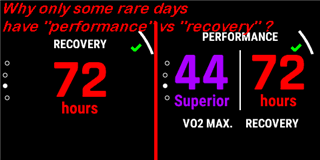Is this a feature or a bug?
At some point, maybe during the beta program when they tinkered with the firstbeat algorithms so vo2max only increases a tiny amount per day, the summaries after a run usually only show recovery time in hours.
But other times it's like the old screen with the split vo2max and recovery time?
What does that indicate when it happens?
ah I see now the title of the dual one which happens rarely is "performance" so it's detecting some kind of effort, it's not LT and it's not threshold so I am not sure what
https://i.imgur.com/hGE8awZ.png




